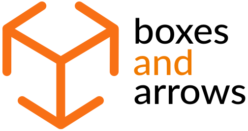Creating clickable PDF prototypes for new designs is a valuable tool that is often overlooked and underutilized. Kyle Pero Soucy demonstrates how we can replicate most interactive design elements without investing a lot of time and effort.
Continue readingCategory: Prototyping
Interactive Prototypes with PowerPoint
Many designers use MS PowerPoint to conceptualize wireframes and get buy-in on project direction. Maureen Kelly shows us how to bring those same artifacts to life as an interactive prototype that allows you to validate the design at many levels.
Continue readingPractical Applications: Visio or HTML for Wireframes
Design organizations inevitably run across the debate of Visio versus HTML wireframes. The decision for one over the other is never a clear-cut one since, as with all things IA-related, it depends. This article seeks to sort out the issues by describing the pros and cons of each and identifying situations where one may be more effective than the other.
Continue readingHTML Wireframes and Prototypes: All Gain and No Pain
Mention the use of HTML for wireframing or prototyping, and some information architects and interaction designers frantically look for the nearest exit. In some circles, HTML has acquired the reputation of being a time-consuming, difficult undertaking best left to developers. This is very far from the truth.
Continue readingDreamweaver Primer
So, you’ve read the article, “HTML Wireframes and Prototypes: All Gain and No Pain” and now want you want to make an HTML wireframe or prototype. This an easy and pain-free process, using Macromedia Dreamweaver 4.0. Follow this step-by-step guide and you’ll be up and prototyping in a jiffy.
Continue reading